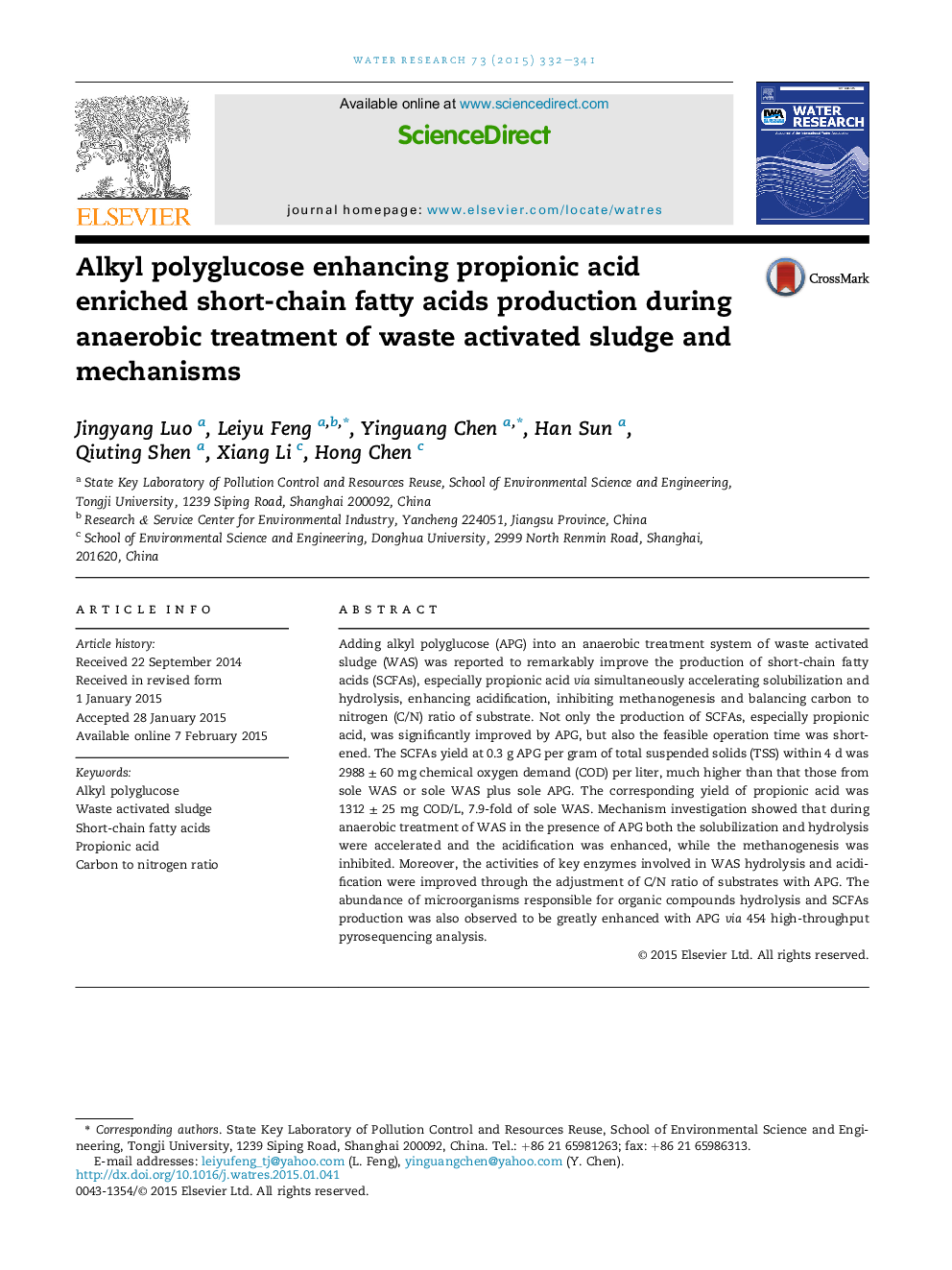| کد مقاله | کد نشریه | سال انتشار | مقاله انگلیسی | نسخه تمام متن |
|---|---|---|---|---|
| 4481251 | 1623095 | 2015 | 10 صفحه PDF | دانلود رایگان |
• SCFAs production, especially propionic acid, was enhanced greatly by APG addition.
• The feasible SCFAs production was 2998.1 mg COD/L with 43.9% propionic acid.
• APG favored solubilization, hydrolysis, acidification but inhibited methanogenesis.
• The activities of key enzymes related with SCFAs production were improved by APG.
• The fermentative microbes producing SCFAs were highly enriched in APG reactor.
Adding alkyl polyglucose (APG) into an anaerobic treatment system of waste activated sludge (WAS) was reported to remarkably improve the production of short-chain fatty acids (SCFAs), especially propionic acid via simultaneously accelerating solubilization and hydrolysis, enhancing acidification, inhibiting methanogenesis and balancing carbon to nitrogen (C/N) ratio of substrate. Not only the production of SCFAs, especially propionic acid, was significantly improved by APG, but also the feasible operation time was shortened. The SCFAs yield at 0.3 g APG per gram of total suspended solids (TSS) within 4 d was 2988 ± 60 mg chemical oxygen demand (COD) per liter, much higher than that those from sole WAS or sole WAS plus sole APG. The corresponding yield of propionic acid was 1312 ± 25 mg COD/L, 7.9-fold of sole WAS. Mechanism investigation showed that during anaerobic treatment of WAS in the presence of APG both the solubilization and hydrolysis were accelerated and the acidification was enhanced, while the methanogenesis was inhibited. Moreover, the activities of key enzymes involved in WAS hydrolysis and acidification were improved through the adjustment of C/N ratio of substrates with APG. The abundance of microorganisms responsible for organic compounds hydrolysis and SCFAs production was also observed to be greatly enhanced with APG via 454 high-throughput pyrosequencing analysis.
Figure optionsDownload high-quality image (294 K)Download as PowerPoint slide
Journal: Water Research - Volume 73, 15 April 2015, Pages 332–341
